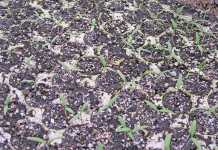Indeed, the Association for Unmanned Vehicle Systems International estimates that farmers will eventually account for 80% of the commercial drone market.
But in addition to being used for precision farming, they have become a highly effective marketing tool for the sale of agricultural land.
Traditionally, potential buyers had to rely on maps and traversing the land by vehicle or foot. Then Google satellite images became available online, resulting in a fairly accurate, if limited, aerial view of the farm.
Now, thanks to drones, surveyors and potential buyers can get high-resolution images of previously unreachable areas, enabling them to identify boundaries, water sources, crop health, drainage and more. The seller can also showcase guest-houses, hunting lodges, hiking trails and other features.
All of this results in a highly accurate picture of the land, says H&H Land and Property, one of the UK’s leading chartered surveyors and agricultural land agents.
Crisp, detailed images
“For marketing purposes, we use both still and video visuals which have been captured by drones, and the results are incredible,” says H&H associate director Will Parker.
“In the past, we have relied on a camera attached to a pole that was fixed to the back of a vehicle, which did limit access. We also used aerial shots from a small aeroplane, but the shots weren’t very detailed.
“There are rules and regulations about the use of drones which have to be complied with, but the results can be spectacular.”
Stable camera platform
Farmers wanting to sell their land should seriously consider making use of a drone, as it presents the property in an entirely new light if carried out professionally.
Drones such as the DJI, which is equipped with a three-axis gimbal camera, provide the most stable video footage available – far superior to a helicopter with a camera.
Sources: neconnected.co.uk; seametrics.com









